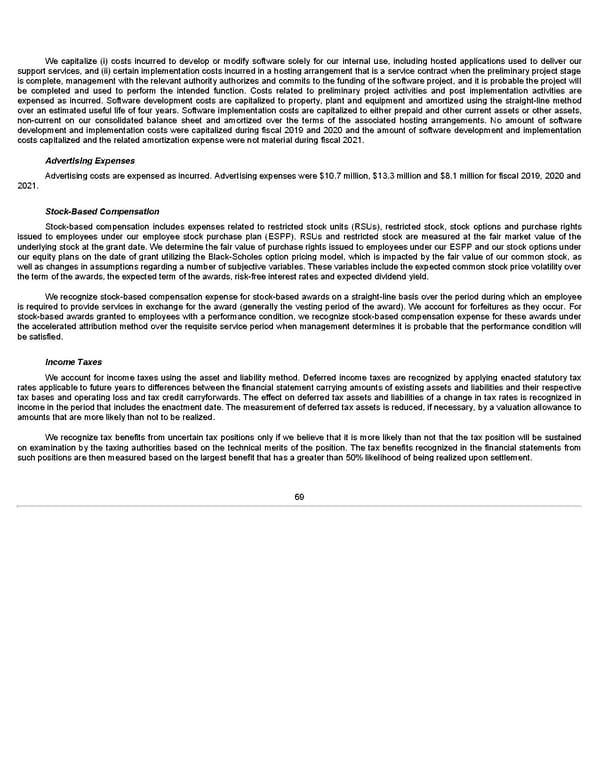We capitalize (i) costs incurred to develop or modify software solely for our internal use, including hosted applications used to deliver our support services, and (ii) certain implementation costs incurred in a hosting arrangement that is a service contract when the preliminary project stage is complete, management with the relevant authority authorizes and commits to the funding of the software project, and it is probable the project will be completed and used to perform the intended function. Costs related to preliminary project activities and post implementation activities are expensed as incurred. Software development costs are capitalized to property, plant and equipment and amortized using the straight-line method over an estimated useful life of four years. Software implementation costs are capitalized to either prepaid and other current assets or other assets, non-current on our consolidated balance sheet and amortized over the terms of the associated hosting arrangements. No amount of software development and implementation costs were capitalized during fiscal 2019 and 2020 and the amount of software development and implementation costs capitalized and the related amortization expense were not material during fiscal 2021. Advertising Expenses Advertising costs are expensed as incurred. Advertising expenses were $10.7 million, $13.3 million and $8.1 million for fiscal 2019, 2020 and 2021. Stock-Based Compensation Stock-based compensation includes expenses related to restricted stock units (RSUs), restricted stock, stock options and purchase rights issued to employees under our employee stock purchase plan (ESPP). RSUs and restricted stock are measured at the fair market value of the underlying stock at the grant date. We determine the fair value of purchase rights issued to employees under our ESPP and our stock options under our equity plans on the date of grant utilizing the Black-Scholes option pricing model, which is impacted by the fair value of our common stock, as well as changes in assumptions regarding a number of subjective variables. These variables include the expected common stock price volatility over the term of the awards, the expected term of the awards, risk-free interest rates and expected dividend yield. We recognize stock-based compensation expense for stock-based awards on a straight-line basis over the period during which an employee is required to provide services in exchange for the award (generally the vesting period of the award). We account for forfeitures as they occur. For stock-based awards granted to employees with a performance condition, we recognize stock-based compensation expense for these awards under the accelerated attribution method over the requisite service period when management determines it is probable that the performance condition will be satisfied. Income Taxes We account for income taxes using the asset and liability method. Deferred income taxes are recognized by applying enacted statutory tax rates applicable to future years to differences between the financial statement carrying amounts of existing assets and liabilities and their respective tax bases and operating loss and tax credit carryforwards. The effect on deferred tax assets and liabilities of a change in tax rates is recognized in income in the period that includes the enactment date. The measurement of deferred tax assets is reduced, if necessary, by a valuation allowance to amounts that are more likely than not to be realized. We recognize tax benefits from uncertain tax positions only if we believe that it is more likely than not that the tax position will be sustained on examination by the taxing authorities based on the technical merits of the position. The tax benefits recognized in the financial statements from such positions are then measured based on the largest benefit that has a greater than 50% likelihood of being realized upon settlement. 69
 Annua lReport Page 68 Page 70
Annua lReport Page 68 Page 70